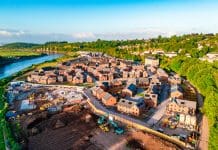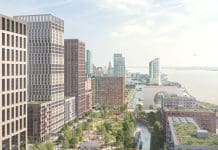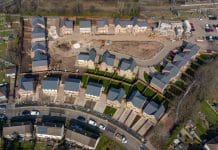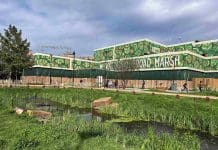Natasha Levanti writes on behalf of the Environmental Industries Commission (EIC) outlining a sustainable way forward in both housing and commercial development of brownfield land…
Currently only 10-20% of developments in the UK take place on sites classified as brownfield. The Environmental Industries Commission (EIC) Brownfield First sub group strongly supports the government’s emphasis on promotion of brownfield development as a potential solution to the housing crisis. EIC believes that the true potential of brownfield development is the creation of sustainable communities with the right combination of housing, retail, and commercial/industrial development upon eligible brownfield lands.
As Matthew Farrow, Executive Director of the Environmental Industries Commission said, ‘We desperately need more housing and other infrastructure, yet no one wants to see greenfield land built over. A ‘brownfield first’ policy can square this circle and the UK land remediation industry is ready to deliver’.
Unfortunately there is a common misperception that any land designated as brownfield is contaminated to the point of harming human health – a wrong assumption that encourages many to pursue building upon greenfield lands, destroying an irreplaceable UK asset.
The four different screening levels of brownfield are found in the Environmental Protection Act of 1990, within Part 2 A Regulations. While one of the four categories is hazardous, the three other categories of brownfield are typically cost effective to remediate when compared to the alternative cost of greenfield destruction. Since there has not been a brownfield register kept, and local authority distinctions vary, there have been many cases in which a water tank or other structures formerly kept on the land classified it as brownfield. Cases whereby there is alkaline, heavy metals or the presence of oils will require acid treatments, sieving or fleshing out. These treatments vary in cost depending upon what is necessary, yet are often similar to greenfield costs for clearing and preparing the land for development.
In order to appropriately address the cost concerns, EIC supports the £1 billion fund put forth for local authorities in order to properly prepare suitable brownfield land for development. EIC acknowledges the concerns expressed by the Local Government Association regarding potential presumptions about planning permissions, but also urges local authorities to record their brownfield lands, and prioritise the development of brownfield first before pursuing any potential greenfield development.
In the past, there have not been strong records kept by local authorities or the government on the amount or conditions of brownfield lands. Without such a register it cannot be properly estimated how much land the UK has classified as brownfield, nor the reasons why it has been classified as this. The UK needs a register of such land, including information on environmental surveys and remediation needs. EIC is strongly advocating that local authorities work together with UK wide authorities to create such a register, and as such is working with the Homes & Communities Agency to determine the screening levels needed to ensure that we have an accurate assessment of development potential for remediated brownfield land.
The Environmental Industries Commission is highly engaged in the governmental and non-governmental discussions about brownfield, with EIC’s main Contaminated Land Group, Brownfield First subgroup, and Category 4 Screening Level subgroup. As such, EIC is looking forward to the inclusion of a Brownfield section within the Housing Bill this autumn, and will continue to ensure that this issue continues to be approached logically, safely, as well as with a comprehensive outlook on the conditions of land throughout the UK. It is only through such an approach that we can hope to appropriately address the need for land, whilst preserving the UK’s greenfield land that adds to our sense of wellbeing.
It is undeniable that the UK public require a housing solution, as well as solutions for sustainable social infrastructure development to support a rising population. To the public eye, the UK currently appears to be devoid of land appropriate for development, but this is due in a large part to the lack of detailed records of brownfield land and a lack of public understanding as to how brownfield can be utilised.
Through the prioritisation of suitable brownfield land at all levels, a register of all UK brownfield (according to appropriate screening levels), and government aid that lessens the cost to local authorities or developers, can ensure the UK can develop sustainable communities as well as preserve greenfield lands. ■
Natasha Levanti
Group Communications Executive
Association for Consultancy and Engineering
Tel: 020 7222 4148
info@eic-uk.co.uk













